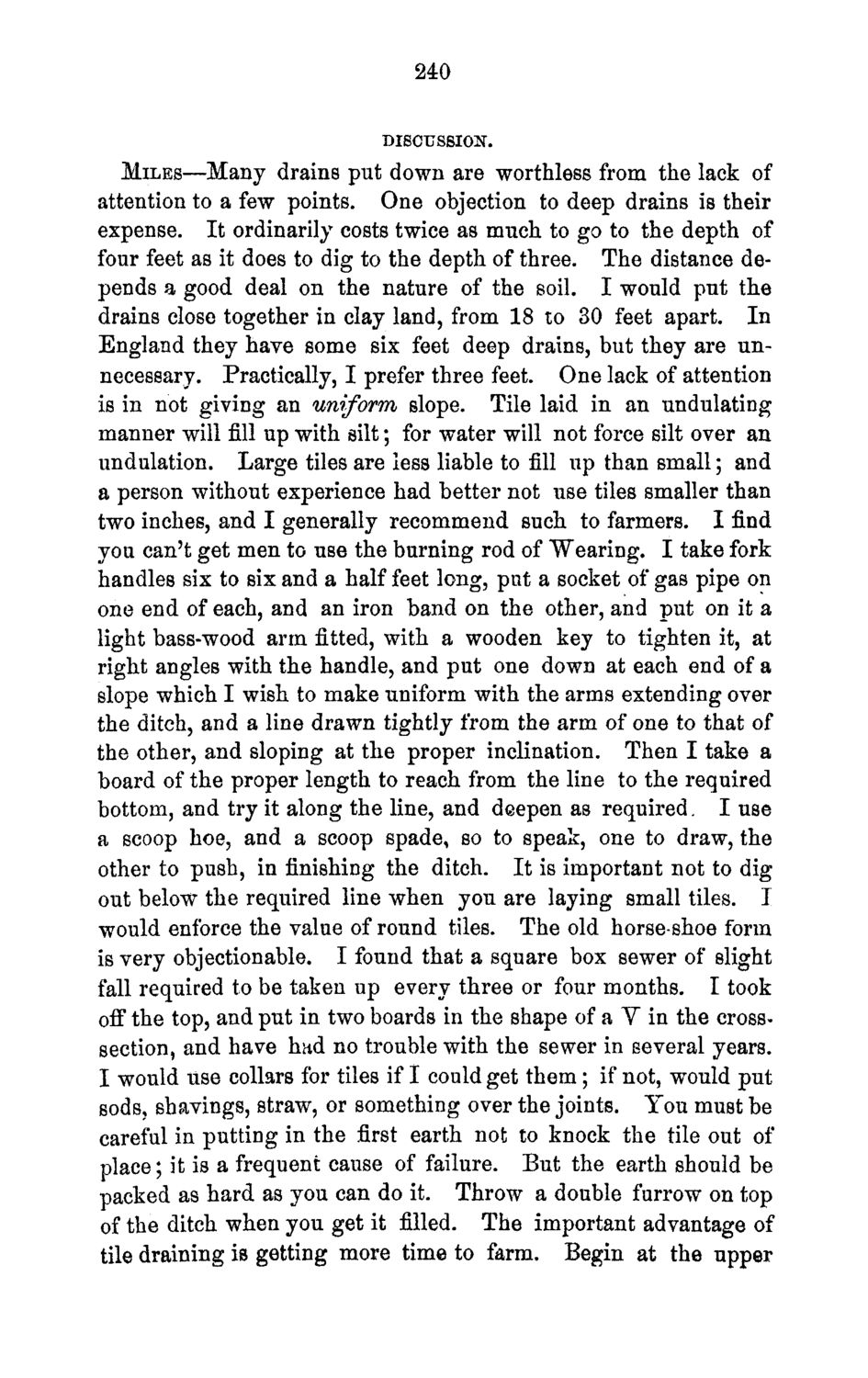| |
| |
Caption: Board of Trustees Minutes - 1870
This is a reduced-resolution page image for fast online browsing.

EXTRACTED TEXT FROM PAGE:
240 DISCUSSION. MILES—Many drains put down are worthless from the lack of attention to a few points. One objection to deep drains is their expense. It ordinarily costs twice as much to go to the depth of four feet as it does to dig to the depth of three. The distance depends a good deal on the nature of the soil. I would put the drains close together in clay land, from 18 to 30 feet apart. In England they have some six feet deep drains, but they are unnecessary. Practically, I prefer three feet. One lack of attention is in not giving an uniform slope. Tile laid in an undulating manner will fill up with silt; for water will not force silt over an undulation. Large tiles are less liable to fill up than small; and a person without experience had better not use tiles smaller than two inches, and I generally recommend such to farmers. I find you can't get men to use the burning rod of Wearing. I take fork handles six to six and a half feet long, put a socket of gas pipe on one end of each, and an iron band on the other, and put on it a light bass-wood arm fitted, with a wooden key to tighten it, at right angles with the handle, and put one down at each end of a slope which I wish to make uniform with the arms extending over the ditch, and a line drawn tightly from the arm of one to that of the other, and sloping at the proper inclination. Then I take a board of the proper length to reach from the line to the required bottom, and try it along the line, and deepen as required. I use a scoop hoe, and a scoop spade, so to speak, one to draw, the other to push, in finishing the ditch. It is important not to dig out below the required line when you are laying small tiles. I would enforce the value of round tiles. The old horse-shoe form is very objectionable. I found that a square box sewer of slight fall required to be taken up every three or four months. I took off the top, and put in two boards in the shape of a V in the crosssection, and have had no trouble with the sewer in several years. I would use collars for tiles if I could get them; if not, would put sods, shavings, straw, or something over the joints. You must be careful in putting in the first earth not to knock the tile out of place; it is a frequent cause of failure. But the earth should be packed as hard as you can do it. Throw a double furrow on top of the ditch when you get it filled. The important advantage of tile draining is getting more time to farm. Begin at the upper
| |